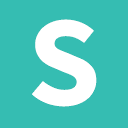In previous article, I mentioned what is responsive web design, but in this article, I have mentioned Bootstrap framework alternatives or you can say some top front-end frameworks, which you can use to make front-end of your website better quickly and easily.
Every stage of web development is essential. Still, the front end requires special attention since it is what the users interact with, and developers use Bootstrap CSS framework to help the development.
Bootstrap is an open-source web development framework that includes templates and codes. It helps developers construct quality functional websites in less time.
The features of Bootstrap appeal to every web developer, but it is not the only tool you can use. There are several other alternatives, as you will find out in this post.
1. Tailwind CSS

Tailwind CSS is described as a "utility-first" CSS framework with classes like flex, pt-4, text-center, and rotate-90. It is a highly customizable, low-level CSS framework that does not impose design decisions you must find your way around.
If you need a tool that does not have a default theme and comes with a set of predesigned widgets you can use to design your website, Tailwind is perfect for you. It also has a CSS IntelliSense extension for VS Code, which ensures you do not have to know every detail, like class names and others.
Features
- Tailwind is written in PostCSS and configured in JavaScript, giving you the full power of a real programming language.
- Tailwind has utility classes that help you develop websites without making two websites look identical.
- Tailwind is customizable and does not impose a default theme.
- Tailwind makes it easy to build responsive interfaces without leaving your HTML.
- Tailwind provides tools for extracting component classes from repeated utility patterns.
2. Materialize CSS
Materialize is a modern responsive CSS framework designed by Google. It combines the classic principles of successful design along with innovation and technology. With its defeat styling and customized components, you can use Materialize to develop websites quickly and with ease.
This tool is a UI component library with JavaScript, HTML, and CSS. Materialize is an excellent alternative to Bootstrap based on its foundations.
Features
- Materialize has an inbuilt responsive design.
- It is a standard CSS with a minimal footprint.
- It requires the jQuery JavaScript library to function fully.
- Materialize is compatible with many browsers and can be used to create reusable web components.
- Materialize has enhanced features like cards, tabs, and navigation bars.
- Materialize provides new versions of a typical user interface controls that follow material design concepts.
3. Semantic UI

Semantic UI is one of the best front-end development frameworks used instead of Bootstrap. It has pre-built semantic components that help create an attractive and responsive layout using human-friendly HTML.
Like Bootstrap, Semantic UI is a jQuery-free, React-compatible framework that helps optimize development time. It acts as an overlay over the React components and provides Semantic themes as a CSS stylesheet.
Features
- Semantic UI is open source and has great community support.
- Semantic UI is easy to learn.
- Semantic UI lets you build web applications without building each component over again.
- Semantic UI lets you install a variety of themes as well as CSS, JavaScript, and font files.
- Semantic UI has a lightweight user interface.
- Semantic UI's components are easily accessible and also easy to use.
4. Skeleton
Skeleton is a lightweight CSS framework with about 400 lines built with mobile in mind. If you are not taking on a large project, Skeleton is the right tool for you.
Whatever the screen size, Skeleton does an excellent job of making the layout a significant attraction. It does so with a grid system containing rows and columns that you can adjust. Skeleton provides essential components like lists, forms, buttons, and tables.
Features
- Skeleton provides web development's essential components and building blocks.
- Skeleton is easy to use and understand, making it suitable for beginners.
- Skeleton has components that can be developed with JavaScript/ JQuery and CSS.
- Skeleton does not give the JS and CSS for tab/pills, carousel, accordion, pagination, and others.
- Skeleton is compatible with large screens and mobile devices.
5. Bulma
Bulma is a free, open-source framework that provides ready-to-use front-end components that helps you to build responsive web interfaces easily. It is based on modern Flexbox and does not require CSS floats.
Features
- It does not require knowledge of CSS.
- It is responsive.
- It has a mobile-first layout.
- It is well-documented and constantly enhancing.
- It has a customizable theme.
- It has common user interface components.
6. Pure CSS

Pure.css is a set of small, responsive CSS modules you can use in every web project. It is responsive and easy to use but perfect for small projects. It is a tool for developers to build responsive layouts with its UI menu components. Pure CSS will help you quickstart your next web project with customizable layouts, without Javascript, save for certain menu interactions.
Features
- It was built with mobile devices in mind.
- Small file sizes.
- It is customizable.
- It builds on Normalize.css.
- It provides layout and styling for native HTML elements, plus the most common UI components.
- It has minimal styles that enable you to write your application styles on it.
- It makes it easy to create beautiful responsive layouts for all screen sizes.
Conclusion
You can consider any of the tools in this post if you need to do away with Bootstrap for any reason. However, you can do more research about each tool before settling for one.
You may also like to read:
